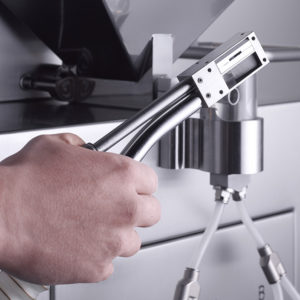 Demanding superior sorting capabilities for your packaging line
Demanding superior sorting capabilities for your packaging line
The implementation of a tablet sorting device upstream of…
 Case study iSpray – External lubrication system
Case study iSpray – External lubrication system
The Challenge Punch sticking, hardness stability, and high ejection…
 Exhibition | Interpack - Düsseldorf, Germany - 4-10 May 2023
Exhibition | Interpack - Düsseldorf, Germany - 4-10 May 2023
Visit us at Interpack on May 4-10th, the global…
 ATEX Certification
ATEX Certification
Pharma Technology just got certification following the ATEX Directive…
 Addressing Dust Accumulation in Tablet Manufacturing
Addressing Dust Accumulation in Tablet Manufacturing
Dedusting equipment and techniques address problems associated with tablet…
 Exhibition | ACHEMA - Frankfurt, Germany - 22-26 August 2022
Exhibition | ACHEMA - Frankfurt, Germany - 22-26 August 2022
Visit us at the Achema on August 22-26th, the…

In this paper, we will analyze the advantages of using external lubrication in the pharmaceutical tablet manufacturing process.
During the manufacturing process, some of the ingredients in the formulation may be sticky and disturb the compression process.
If these granules stick to the punches or dies, this can lead to major interruptions in production, requiring the dismantling and cleaning of the tooling.
This type of problem also leads to a lower production rate, a risk of breakage between the different layers of the product (capping), and premature wear of the punch and die tools.
This greatly reduces the overall efficiency of the production line.
The addition of lubricant such as Magnesium Stearate (vegetable material + food additive) can reduce or eliminate sticking issues. There are two ways to add the lubricant:

There are significant differences between the two methods, and this is what we will demonstrate in the table below.
| Adding magnesium stearate into the product blend as a component of the granule: | Spraying lubricant onto the punches and dies during tableting and vacuuming the excess of powder: |
| – Product loses hardness | – Product hardness and consistency remain stable |
| – Poor tablet solubility | – Good tablet solubility |
| – Undesired magnesium stearate repels water | – Homogeneous dissolution into water |
| – Possibility of granulation uniformity, potentially causing variations in tablet Content Uniformity | – Tablet composition remains constant |
| – Possible variations from one batch to another | – No change from one batch to another |
| – Overall amount of lubricant is relatively high | – Small, precisely controlled amount of lubricant added per tablet |
| – High rejection rate due to inconsistent blend & hardness fluctuations | – Nearly no waste related to hardness fluctuations |
| – High amount of additional compression excipient | – Lower consumption of compression excipient |
| The addition of magnesium stearate as a component in the blend presents several risks that are hard to quantify, and which make process validation more complicated. | Spraying a constant flow of lubricant onto the punches and dies improves efficiency and has no effect on the production quality. Lubricant dosing can be continuously measured and validated. |
More information and video? iSpray – External tablet lubrication system | Pharmatec